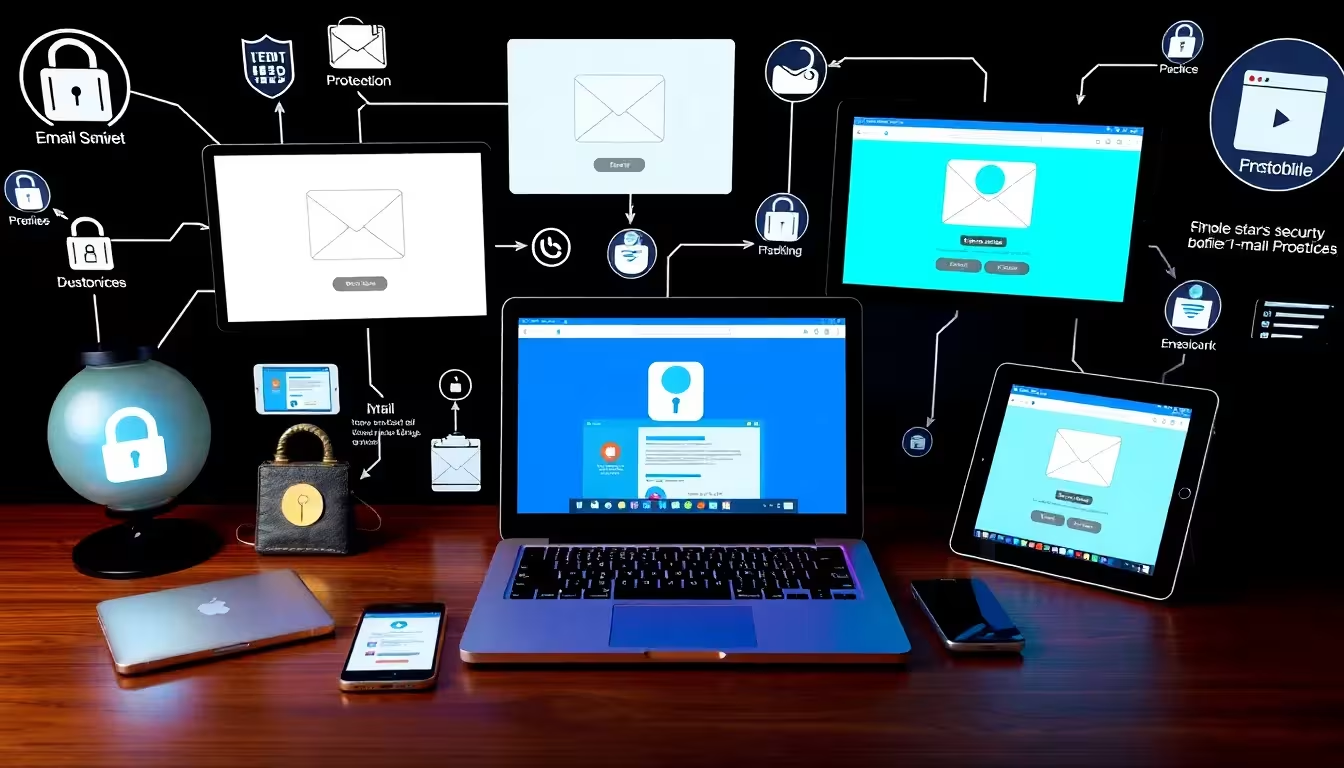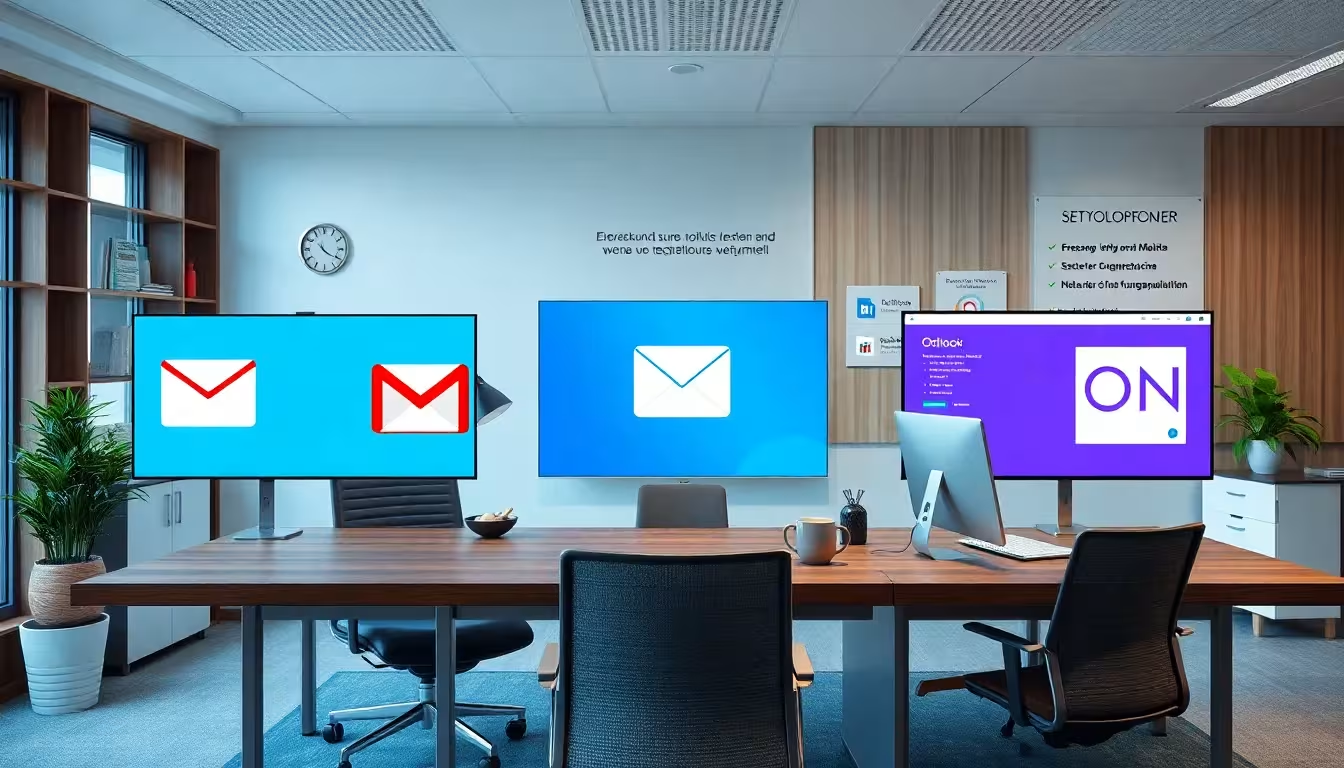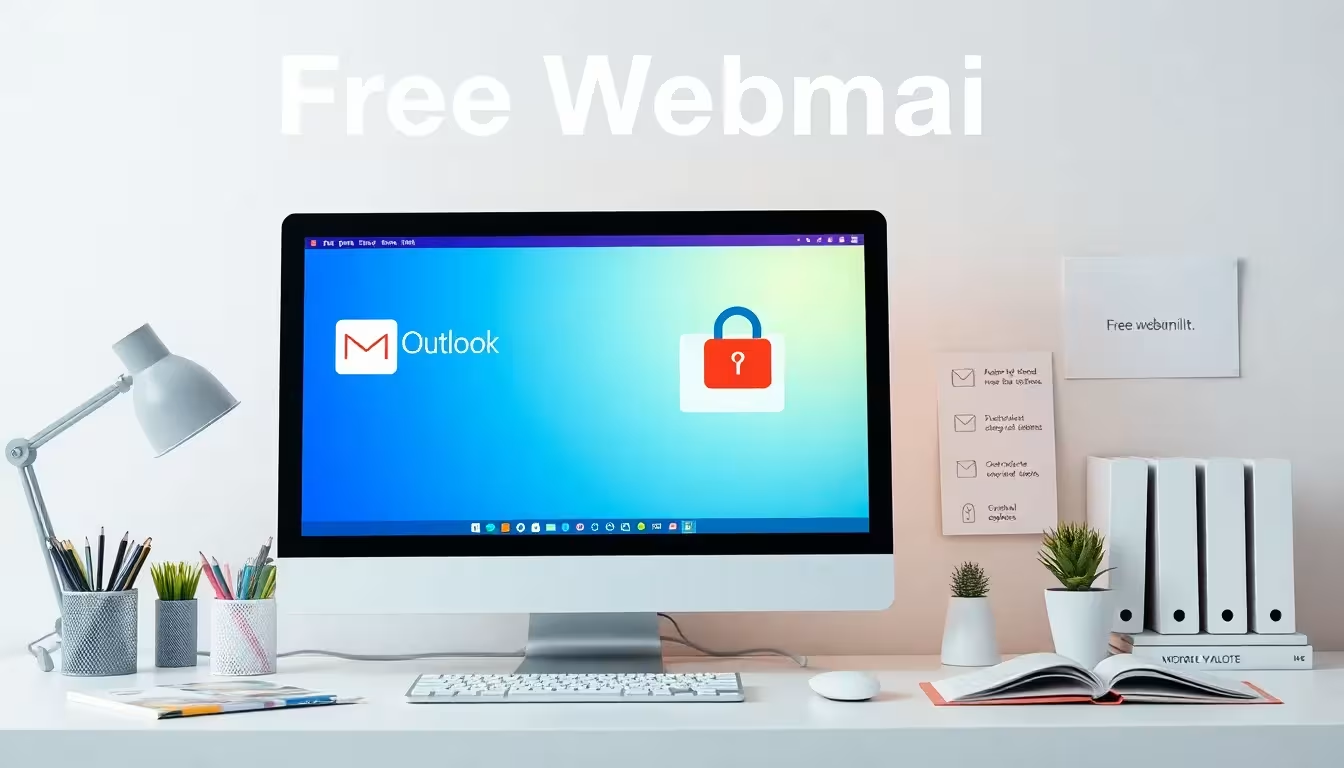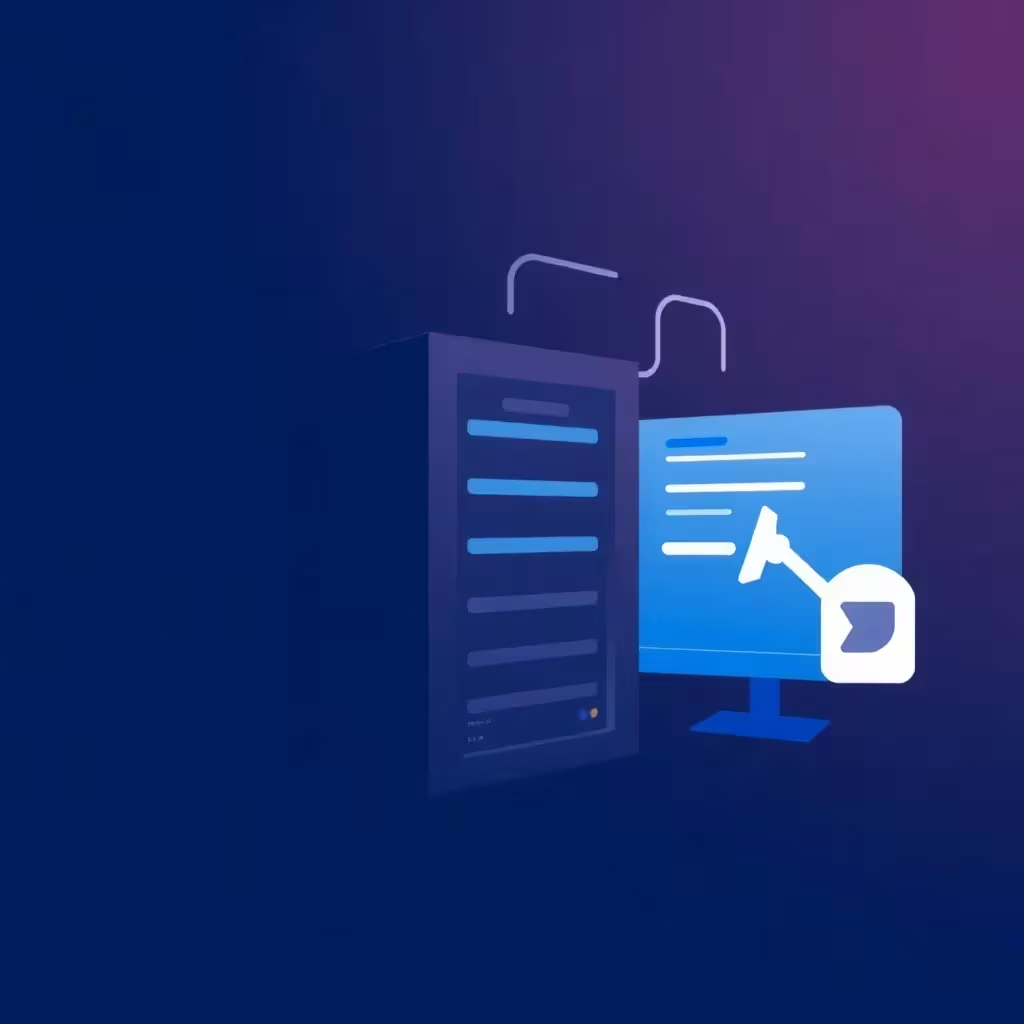The best free webmailers combine security, easy setup and practical additional functions. If you want to manage private or business emails reliably and flexibly, you should pay attention to functions such as server location, storage space and protection mechanisms - especially with regard to phishing and unwanted data access.
Key points
- Server locations influence data protection and legal security
- Storage space Decides on flexibility for large attachments
- Calendar and cloud functions turn webmailers into an organizational hub
- Security features such as 2FA and spam filters increase protection and convenience
- Apps enable mobile use and synchronization on the go

What can a free webmailer do?
A free e-mail inbox has long been more than just a place to send messages. Providers such as Gmail, Outlook or GMX deliver numerous Additional functions that make everyday digital life easier. These include calendars, contact management, cloud storage and spam filters. As only one browser or app is usually required for access, emails can be retrieved worldwide and across devices. Some services also allow the use of multiple alias addresses, which is particularly useful for online shopping.
While US providers offer international solutions, German services such as mail.de or Web.de represent a Data protection-compliant alternative ready. According to the provider, the data remains entirely on domestic servers and is covered by the General Data Protection Regulation (GDPR). This can be particularly relevant for companies, freelancers or anyone who attaches great importance to the protection of personal information.
In many cases, it is also worth looking at additional features that go beyond simply sending and receiving emails. For example, an integrated task planner can help you keep track of projects. Equally important are filter and sorting mechanisms with which you can bring order to your inbox. With targeted filters, emails can be automatically distributed to different folders, such as "Invoices", "Private" or "Newsletter".
Comparison of the most popular free providers
If you want to find the right webmailer, you should familiarize yourself with the most important features of the providers - especially with regard to storage and server locations. The maximum attachment size also determines whether the service is suitable for larger files or whether other options (e.g. cloud solutions) are required.
| Provider | Storage space | Cloud storage | Max. Attachment | German servers | Mobile app |
|---|---|---|---|---|---|
| Gmail | 15 GB | 15 GB | 25 MB | No | Yes |
| Outlook.com | 15 GB | 5 GB | 25 MB | No | Yes |
| GMX | 1.5 GB | from 2 GB | 20 MB | Yes | Yes |
| web.com | 1 GB | 2-8 GB | 20 MB | Yes | Yes |
| Yahoo Mail | 1 TB | - | 25 MB | No | Yes |
| mail.de | 2 GB | 2 GB | 60 MB | Yes | Yes |
| freenet Mail | 1 GB | 2 GB | 20 MB | Yes | Yes |
Setup: How to start your mailbox
Setting up a webmail account usually only takes a few minutes. I just enter my basic details, select the desired e-mail address and choose a strong password. After clicking on the confirmation link, I can get started straight away. Many providers also allow synchronization with desktop programs such as Thunderbird or mobile apps.
Some providers offer apps with particularly intuitive interfaces - you can find a good overview in the article on Webmail apps 2025. For people who want to work in a more organized way, whether professionally or privately, it is particularly worth paying attention to calendar and cloud integration. In addition to the appointment calendar, note functions and address books are often integrated so that you can access all information quickly and centrally.
Managing multiple mailboxes within a single webmail interface is also becoming increasingly important. Some services offer the option of integrating additional email accounts (e.g. from other providers) so that you can manage all messages in one place. This saves time and increases clarity. This function makes everyday life much easier, especially if you use different addresses for different purposes.

Security functions: How webmailers protect you
Webmail services use comprehensive security features. These include encrypted connections (SSL/TLS), spam filters, automatic virus checks and two-factor authentication (2FA). Some services such as Web.de or GMX also offer an optional End-to-end encryptionwhich is particularly useful for sensitive data.
International services such as Gmail or Outlook use distributed server infrastructures, which ensures speed - however other data protection regulations is required. If you want to do without this, it is better to use providers based in Germany. Stricter data protection regulations apply there and you are generally better protected against unwanted access. Protection against phishing attacks is also strong in many cases. Any suspicious email is either not delivered at all or is immediately marked as spam - provided that the security measures of the respective provider are correspondingly effective.
To give your account even stronger protection, it's worth making use of all possible security options. For example, use the automatic VPN connection on your smartphone or browser when you access your email account on the move. This will mask your IP address and make it more difficult for unauthorized access. Regular software updates for your devices are also essential, as this is the only way to close newly discovered security gaps.
Data protection: Who stores where?
Legal certainty and the handling of user data are key criteria. Gmail, Outlook and Yahoo use international rules that could give US authorities access to data. German providers, on the other hand, store data in compliance with the GDPR: Web.de, GMX, mail.de and freenet Mail expressly emphasize the protection of personal correspondence.
Even if international providers score points with high storage capacity or more automation: Anyone who sends e-mails with confidential content is privacy-friendly webmail solutions better advised. When choosing a service, it is also worth taking a look at the exact data protection guidelines. Some providers provide detailed information about what data is stored, how long it is stored and whether data is passed on to third parties. This transparency factor can be an important decision criterion.
Last but not least, data retention plays a role: Are older emails automatically deleted when your memory overflows? Do attachments have to be backed up manually after a certain time? In most cases, providers send a warning when your storage space is running low. Nevertheless, it is advisable to store important documents or attachments on your own hard disk or in a secure cloud.

How to actively protect your account
Webmailers can do a lot - but you have to take care of security yourself. It starts with a strong passwordwhich consists of letters, numbers and special characters. I also recommend activating 2FA where possible. A stolen password is not enough to gain access. You should also always be careful when dealing with links or attachments.
Some services allow logging of login attempts or unusual behavior. You will be informed directly if a login is made from an unknown region. You should activate this function if it is provided. This gives you the opportunity to quickly recognize and react to suspicious activities.
It is also a good idea to change passwords at regular intervals. This is of course more convenient with a password manager that creates new random passwords and stores them securely. This way, you don't have to remember complicated combinations. On the other hand, you should also make sure that you don't use the same password for multiple accounts. If a password falls into the wrong hands, access to other services could also be compromised.
Manage multiple addresses effectively
I use different addresses: One for shopping, one for newsletters and one for private contacts. This not only keeps me organized, but also protects me from spam. Most webmailers allow Alias addressesthat forward to your main account. These features are particularly helpful in combination with folders that automatically sort emails.
Especially if you work with multiple devices or are on the move, services like Strato Webmailhow convenient modern mail management can be. For example, you could create a separate folder for each alias address and use rules to ensure that incoming emails end up in the right place. This brings noticeable structure to your inbox and prevents important messages from getting lost.
If you subscribe to a lot of newsletters, it is also easier with filters. You can often move messages automatically based on certain subject lines, senders or keywords. This allows you to keep control of incoming emails and not get lost in an overflowing inbox. However, remember to check your spam folder occasionally to make sure that important emails haven't been sorted out by mistake.

Apps & mobile access: stay productive on the go
Almost all providers offer apps for Android and iOS. If you are on the move for work, you should pay attention to push notifications, read receipts and synchronization with calendar and contacts. Gmail runs stably on all devices, and Outlook also offers a Powerful mobile solution.
Apps from smaller providers may show deviations - it is worth taking a look at reviews beforehand. Alternatively, you can retrieve emails via an app such as K-9 Mail, provided the provider supports IMAP. Some of these third-party apps offer more extensive administration functions, such as multiple signatures or more detailed filters. The configuration for PGP encryption is also sometimes easier to implement in an external app.
It is important that you update your mobile email app regularly. Security vulnerabilities can quickly arise if you stay on older versions. Also pay attention to the settings for automatic synchronization to save data volume on the go. Data consumption can skyrocket, especially with large file attachments.

Further tips for effective mail management
Modern webmailers not only make it easier for you to sort and filter emails, but often also offer advanced search functions. For example, you can search for specific attachments, senders or time periods to quickly find the email you are looking for. This is useful if you save a lot of messages or want to go back to old correspondence later.
There is also the option of creating templates for frequently used emails. If you regularly reply to similar inquiries, a template like this will help you save time. You can save the standard texts and adapt them as required. This avoids duplication of work and ensures that all important information is included.
Many services also support the marking or "pinning" of messages. This can be useful, for example, to keep an eye on important customer meetings, invoices or private appointments immediately and not have to search in any subfolders first. In combination with tags or labels, you can also structure your emails. Create a system in advance, for example "important", "to-do" and "done", and assign each email to a corresponding label as you read it. This avoids unnecessary searching back and forth.
Summary: The optimal webmailer for your purpose
If you opt for Gmail or Outlook, you benefit from large storage capacity and versatile integration with cloud services. If you value German data protection and server locations, GMX, mail.de or Web.de are convincing. Yahoo stands out with 1 TB of storage, while mail.de allows users generous attachments.
Individual use is decisive: Do you need quick setup, mobile use and tools such as a calendar or notes? Then also check which app or interface really suits you. The best free webmailer is the one that suits the way you communicate - and provides the necessary security.




